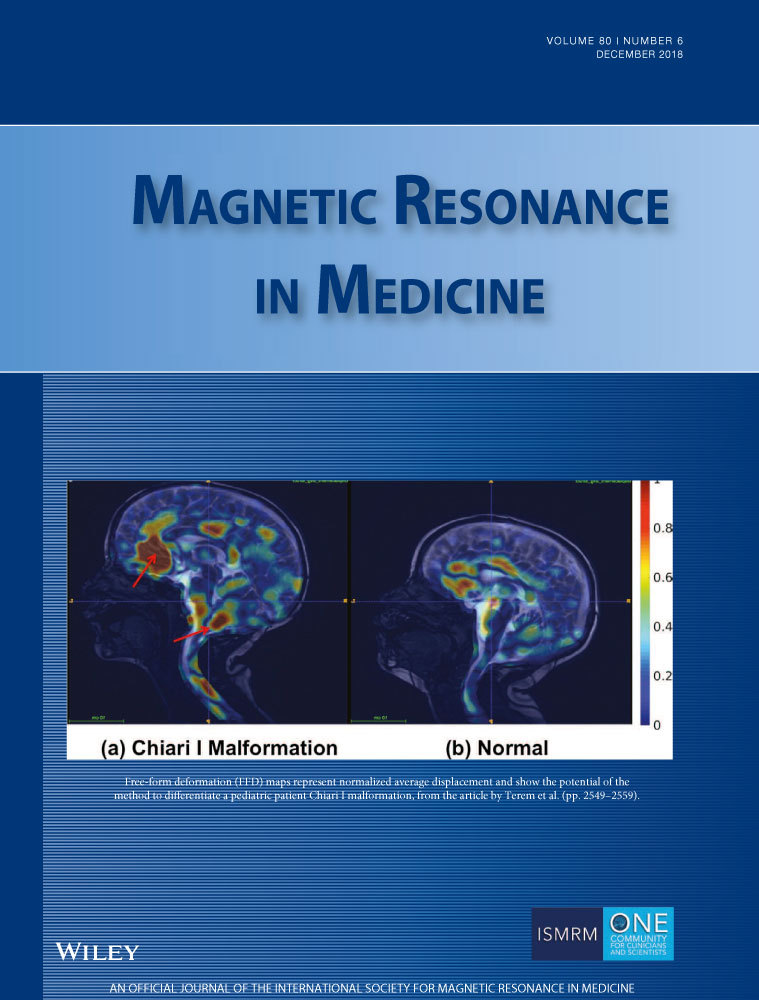Diffusion-weighted magnetic resonance spectroscopy boosted by simultaneously acquired water reference signals
Abstract
Purpose
To combine the metabolite-cycling technique with diffusion-weighted 1H-MR spectroscopy and to use the inherent water reference for compensation of motion-related signal loss for improved estimation of metabolite apparent diffusion coefficients (ADCs).
Methods
Diffusion-weighted spectra of water and metabolites were acquired simultaneously using metabolite-cycling at 3 T. The water information was used for signal correction of phase, frequency, and eddy currents, as well as for compensation of motion-induced signal loss. ADCs were estimated by 2D simultaneous fitting. The quality of ADC restoration was investigated in vitro. Subsequently, the new approach was applied in 13 subjects for enhanced metabolite ADC estimation in gray matter.
Results
Metabolite-cycled diffusion 1H-MRS is suitable to measure metabolite and water ADCs simultaneously. The water reference facilitates signal amplitude restoration, compensating for motion-related artefacts. 2D fitting stabilizes the fitting procedure and allows the estimation of ADCs even for low signal-to-noise metabolites. Use of the motion-compensation scheme leads to estimation of smaller ADCs for virtually all metabolites (44% smaller ADC on average), to a reduction of fitting uncertainties for metabolite ADCs in individual subjects and reduced variance over the cohort (45% smaller SD on average).
Conclusion
Using the simultaneously acquired water signal as internal reference allows not only for compensation of phase and frequency fluctuations but also for signal amplitude restoration, and thus improved metabolite ADC estimation. Combination with 2D simultaneous fitting promises access to the diffusion properties even for low signal-to-noise metabolites. The combination of both techniques increases the specificity and sensitivity of estimated metabolite ADC values in the cohort.




